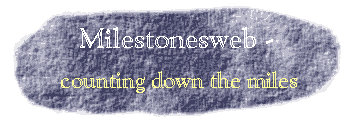

 This
series is notable as the start of a transport renaissance, probably the oldest series of
milestones still extant (the ones from Roman times are now largely in museums). Over a
thousand years had passed since the travellers of Roman Britain had been able to note
their progress on the Imperial highways by the passing of milestones. In the academic
centre of Cambridge, the spirit of accuracy and precision in road measurement dawned
again. The Trinity Hall series came about in an interesting way(4). Robert Hare
was the executor of the estate of Dr William Mowse who died in 1586, leaving about £1000
for charitable use. Hare added £600 himself and purchased the manor of Wallpool. The rent
was to be used for the maintenance of the roads around Cambridge.
This
series is notable as the start of a transport renaissance, probably the oldest series of
milestones still extant (the ones from Roman times are now largely in museums). Over a
thousand years had passed since the travellers of Roman Britain had been able to note
their progress on the Imperial highways by the passing of milestones. In the academic
centre of Cambridge, the spirit of accuracy and precision in road measurement dawned
again. The Trinity Hall series came about in an interesting way(4). Robert Hare
was the executor of the estate of Dr William Mowse who died in 1586, leaving about £1000
for charitable use. Hare added £600 himself and purchased the manor of Wallpool. The rent
was to be used for the maintenance of the roads around Cambridge.
 Dr William Warren was a trustee of this charitable fund and a Fellow of Trinity
Hall, who began to survey the coach road to London in 1725. He selected the south-west
buttress of church of Great St Mary's church,
Cambridge as his survey datum, and armed with nothing more complex that a chain of 66ft he
measured the distances and had this series of milestones installed. His first milestone
(pictured left) cost £5 and 8 shillings to set up and the inscription appears to have
been recut several times, with the date originally shown in Roman numerals, then Arabic
script around 1900 and reverting to Roman numerals in the 1960s.
Dr William Warren was a trustee of this charitable fund and a Fellow of Trinity
Hall, who began to survey the coach road to London in 1725. He selected the south-west
buttress of church of Great St Mary's church,
Cambridge as his survey datum, and armed with nothing more complex that a chain of 66ft he
measured the distances and had this series of milestones installed. His first milestone
(pictured left) cost £5 and 8 shillings to set up and the inscription appears to have
been recut several times, with the date originally shown in Roman numerals, then Arabic
script around 1900 and reverting to Roman numerals in the 1960s.
Apparently unsatisfied with his first set of milestones, Dr Warren replaced them over the
period 1728 to 1732. Most of the milestones on this route are decorated with the crescent
arms of Trinity Hall. Some of these were large - the stone on the left is at Barkway,
though not in exactly the same location Dr Warren put it, outside the Angel inn (no longer
so called)
In June 1940, the government decreed that all placenames should be hidden or removed, to impede the enemy in case of invasion. According to Charles Crawley's history of Trinity Hall, the roadman laid the stones down and hid them in the verge. They were re-erected in 1946, and most of them are there for us to enjoy today, symbols of this pioneering work..